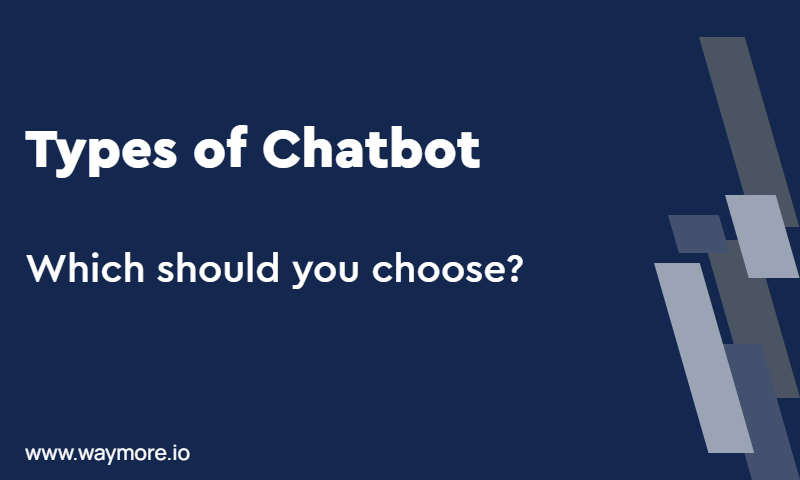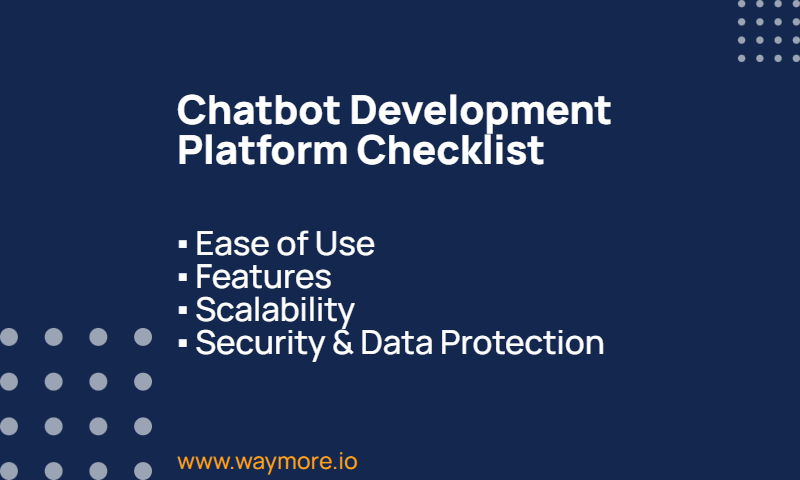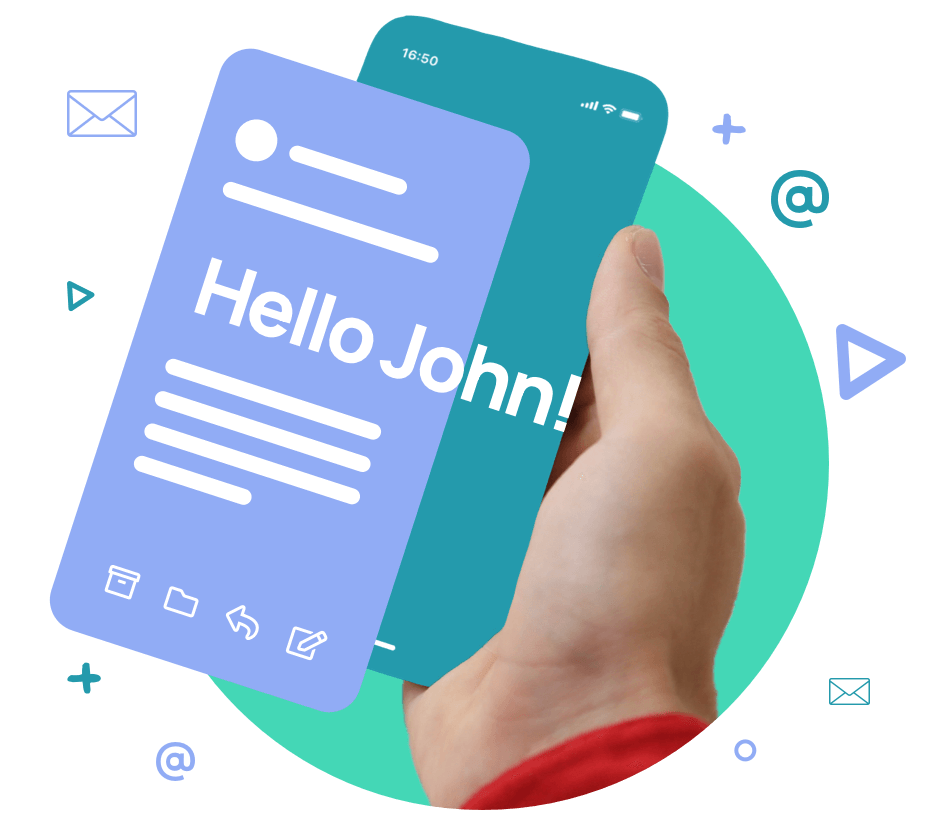Quick Links
Chatbots are becoming more popular and powerful as a way to provide customer service, lead generation, and automate tasks. However, creating a chatbot that can deliver a satisfying and engaging user experience requires more than just coding skills. It also requires a clear and effective AI strategy that aligns with your business goals and customer needs.
What is an AI Strategy for Chatbots?
An AI strategy for chatbots is a plan that defines how you will use artificial intelligence (AI) to create, deploy, and improve your chatbot. It covers aspects such as:
- The purpose and scope of your chatbot
- The target audience and use cases of your chatbot
- The data sources and methods for training your chatbot
- The metrics and tools for evaluating your chatbot
- The platforms and channels for integrating your chatbot
- The feedback and optimization mechanisms for your chatbot
An AI strategy for chatbots is essential for ensuring that your chatbot meets your expectations and delivers value to your customers and your business. It also helps you avoid common pitfalls and challenges that may arise during the chatbot development and implementation process.
How to Develop an effective AI Strategy for Chatbots
Developing an AI strategy for chatbots involves four main steps:
- Identify your goals and objectives
- Define your user personas and scenarios
- Choose your chatbot type and features
- Plan your chatbot implementation strategy and development
Step 1: Identify your goals and objectives
The first step in developing an AI strategy for chatbots is to identify your goals and objectives. What are you trying to achieve with your chatbot? How will it benefit your customers and your business? How will you measure its success?
Some common goals and objectives for chatbots are:
- To provide 24/7 customer Support and service
- Increase customer satisfaction with chatbot AI
- Using customer service AI generate more leads and conversions
- To reduce operational costs and increase efficiency
- To enhance brand awareness and reputation
You should also consider the following questions:
- What is the problem or pain point that your chatbot will solve or address?
- What is the value proposition or unique selling point of your chatbot?
- What are the key performance indicators (KPIs) or success criteria of your chatbot?
- What are the risks or challenges that your chatbot may face or cause?
By answering these questions, you can clarify your vision and scope for your chatbot and set realistic and achievable goals and objectives.
Step 2: Define your user personas and scenarios
The second step in developing an AI strategy for chatbots is to define your user personas and scenarios. Who are your target users? What are their needs, preferences, and expectations? How will they interact with your chatbot?
User personas are fictional representations of your ideal customer engagement, based on data analytics and research. They help you understand your users’ characteristics, motivations, behaviors, and goals. User scenarios are stories that describe how your users will use your chatbot in specific situations and contexts. They help you map out your users’ journeys and touchpoints with your chatbot.
You should also consider the following questions:
- What are the demographics and psychographics of your users?
- What are the pain points or challenges that your users face or want to overcome?
- What are the benefits or outcomes that your users want or expect from your chatbot?
- What are the questions or tasks that your users will ask or perform with your chatbot?
- What are the emotions or sentiments that your users will express or experience with your chatbot?
By answering these questions, you can create user personas and scenarios that will guide your chatbot design and development and ensure that your chatbot meets your users’ needs and expectations.
Step 3: Choose your chatbot type and features
The third step in developing an AI strategy for chatbots is to choose your chatbot type and features. What kind of chatbot do you want to create? What functionalities and capabilities do you want your chatbot to have? How will your chatbot communicate and interact with your users?

There are different types of chatbots, depending on the level of complexity and intelligence that they possess. Some common types of chatbots are:
- Rule-based chatbots: These chatbots follow predefined rules and scripts to respond to user queries. They are simple and easy to create, but they have limited flexibility and functionality. They can only handle specific and straightforward questions and tasks.
- Keyword-based chatbots: These chatbots use keywords and phrases to match user queries with predefined responses. They are more advanced and adaptable than rule-based chatbots, but they still have limitations in understanding natural language and context. They can handle more varied and complex questions and tasks, but they may not always provide accurate or relevant responses.
- Machine learning-based chatbots: These chatbots use machine learning and natural language processing (NLP) to learn from user data and feedback and generate responses dynamically. They are the most sophisticated and intelligent type of chatbots, but they also require more time and resources to create and maintain. They can handle any kind of question and task, and they can provide personalized and conversational responses.
You should also consider the following questions:
- What is the tone and style of your chatbot’s voice and personality?
- What is the level of formality and professionalism of your chatbot’s language and communication?
- What is the type and format of your chatbot’s content and information?
- What are the features and functions that your chatbot will offer or support?
- What are the integrations and extensions that your chatbot will connect or link with?
By answering these questions, you can choose the best chatbot type and features for your goals and objectives and your user personas and scenarios.
Step 4: Plan your chatbot Implementation and AI strategy development
The fourth and final step in developing an AI strategy for chatbots is to plan your chatbot development and implementation. How will you create, test, and deploy your chatbot? What tools and platforms will you use? How will you manage and optimize your chatbot?

Selecting a development platform for building a chatbot requires careful consideration of several factors, including ease of use, features, scalability, and security.
Ease of Use:
Technical Expertise and Team Capabilities: Assess the proficiency of your team in programming languages, frameworks, and other tools required by the platform. Choose the right chatbot platform that aligns with your team’s skills and offers intuitive interfaces or visual builders if your team lacks extensive coding expertise.
Features:
Natural Language Processing (NLP) Capabilities: Evaluate the platform’s NLP capabilities for understanding and processing user input effectively. Look for support for multiple languages, sentiment analysis, entity recognition, and intent detection to create engaging conversational ai experiences.
Integration Options: Assess the platform’s compatibility with third-party APIs and services for seamless integration with your existing systems and tools. Check for support for popular messaging channels like Facebook Messenger, Slack, or custom web chat interfaces.
Analytics and Reporting: Determine if the platform offers robust analytics and reporting features to track chatbot performance, user engagement metrics, and conversation analytics. Insights derived from these analytics can inform iterative improvements and optimizations to enhance the chatbot’s effectiveness.
Scalability:
Infrastructure and Hosting: Evaluate the platform’s infrastructure and hosting options to ensure scalability to accommodate increasing user traffic and growing demand. Look for cloud-based solutions that offer elastic scaling capabilities to dynamically adjust resources based on workload fluctuations.
Performance and Reliability: Consider the platform’s track record in handling high volumes of concurrent users without compromising performance or reliability. Look for features like load balancing, auto-scaling, and redundancy to mitigate downtime and ensure uninterrupted service delivery.
Security:
Data Protection and Privacy: Prioritize platforms that implement robust security measures to safeguard user data and comply with relevant regulations such as GDPR or CCPA. Ensure the platform offers features like data encryption, access controls, and compliance certifications to protect sensitive information.
Vulnerability Management: Assess the platform’s approach to vulnerability management and proactive security measures, including regular security audits, patch management, and threat detection mechanisms. Look for platforms that prioritize security updates and provide timely notifications about potential security threats or vulnerabilities.
You should also consider the following questions:
- What are the steps and stages of your chatbot development and implementation process?
- What are the resources and requirements for your chatbot development and implementation process?
- What are the roles and responsibilities of your chatbot development and implementation team?
- What are the tools and methods for testing and debugging your chatbot?
- What are the channels and devices for deploying and distributing your chatbot?
- What are the feedback and improvement mechanisms for your chatbot?
By answering these questions, you can plan your chatbot development and implementation process and ensure that your chatbot is ready and reliable for your users.
Best Practices for Implementing Chatbot AI:A step-by-step guide
Implementing chatbot AI is not a one-time event, but a continuous and iterative process. You need to monitor, evaluate, and optimize your chatbot regularly to ensure that it performs well and delivers value to your customers and your AI business. Here are some best practices and tips to help you implement chatbot AI successfully:
- Define your chatbot’s scope and purpose clearly and communicate it to your users. Your chatbot should have a clear and specific goal and function, and your users should know what to expect from your chatbot and how to use it.
- Design your chatbot’s user interface and user experience carefully and intuitively. Your chatbot should have a simple and attractive interface and a smooth and engaging user experience. Your chatbot should also provide clear and helpful instructions, feedback, and error messages to your users.
- Train your chatbot’s data and model adequately and accurately. Your chatbot should have enough and relevant data and a robust and reliable model to learn from and generate responses. Your chatbot should also be able to handle different types and formats of user input and output.
- Test your chatbot’s functionality and quality thoroughly and frequently. Your chatbot should be able to handle various user scenarios and situations and provide consistent and correct responses. Your chatbot should also be able to handle exceptions and errors gracefully and recover from failures quickly.
- Deploy your chatbot’s integration and distribution strategically and securely. Your chatbot should be able to integrate and interact with different platforms and channels and reach your target audience effectively and efficiently. Your chatbot should also be able to protect and respect your users’ privacy and data.
Monitor your chatbot’s performance and feedback continuously and proactively. Your chatbot should be able to measure and report its performance and feedback using relevant metrics and tools. Your chatbot should also be able to collect and analyze user feedback and use it to improve and optimize your chatbot.
- Optimize your chatbot’s content and information regularly and creatively. Your chatbot should be able to update and enrich its content and information with new and relevant data and sources. Your chatbot should also be able to provide diverse and dynamic content and information to your users, such as images, videos, links, etc.
- Improve your chatbot’s intelligence and personality continuously and gradually. Your chatbot should be able to learn and adapt to your users’ preferences and behaviors and provide personalized and contextualized responses. Your chatbot should also be able to express and convey its voice and personality to your users, such as humor, empathy, etc.
Conclusion
In conclusion, establishing an effective AI strategy for chatbots is crucial for organizations seeking to leverage conversational AI technology to enhance customer experiences, streamline operations, and drive business growth. However, it can be quite challenging
Empower your business with a winning AI strategy for chatbots.
Fortunately, in the market, there are easy-to-use chatbot AI platforms that can seamlessly develop and deploy chatbots, delivering tangible value to both customers and the organization. These platforms drive engagement, loyalty, and business success in the increasingly competitive digital landscape
If you want to learn more, reach out to the experts at WayMore today.




